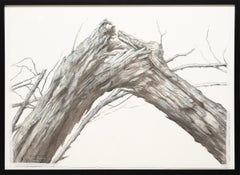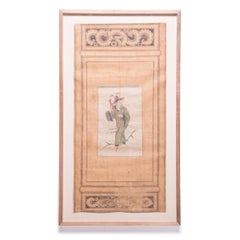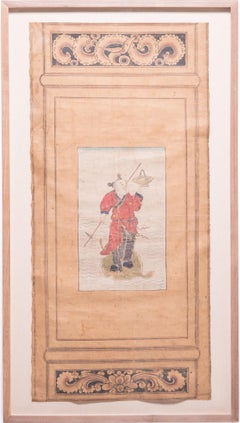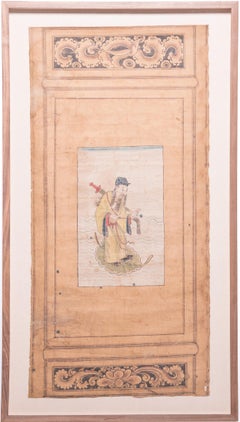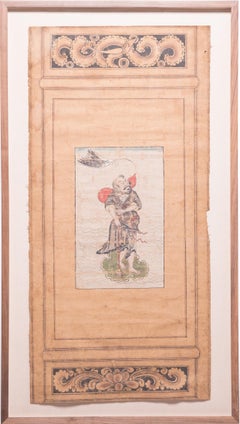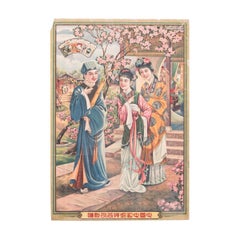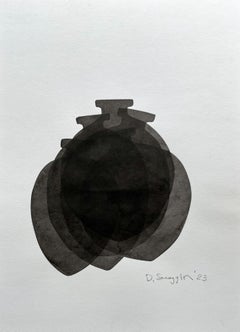PAGODA RED Figurative Drawings and Watercolors
21st Century and Contemporary Naturalistic Figurative Drawings and Water...
Charcoal, Paper
Mid-19th Century Figurative Paintings
Fabric, Ink, Pigment
Mid-19th Century Qing Figurative Paintings
Fabric, Ink, Pigment
Mid-19th Century Figurative Paintings
Fabric, Ink, Pigment
Mid-19th Century Figurative Paintings
Fabric, Ink, Pigment
Early 20th Century Art Deco Figurative Drawings and Watercolors
Paper, Ink
20th Century Contemporary Figurative Paintings
Paint, Ink
Early 20th Century Folk Art Figurative Paintings
Paper, Ink, Pigment
21st Century and Contemporary Outsider Art Figurative Drawings and Water...
Paper, Ink, Acrylic, Watercolor
Early 20th Century Folk Art Figurative Paintings
Paper, Ink, Pigment
Early 20th Century Folk Art Figurative Paintings
Paper, Ink, Pigment
Early 20th Century Qing Figurative Drawings and Watercolors
Silk, Paper, Ink
Mid-19th Century Qing Figurative Drawings and Watercolors
Paper, Ink, Watercolor
Mid-19th Century Qing Animal Drawings and Watercolors
Cotton, Wood, Ink
Mid-19th Century Qing Figurative Paintings
Fabric, Linen, Wood, Ink
21st Century and Contemporary Outsider Art Figurative Drawings and Water...
Paper, Ink, Acrylic, Watercolor
Early 20th Century Landscape Drawings and Watercolors
Silk, Paper, Ink
19th Century Qing Figurative Drawings and Watercolors
Paper, Ink
21st Century and Contemporary Outsider Art Figurative Drawings and Water...
Paper, Board, Graphite
21st Century and Contemporary Outsider Art Figurative Drawings and Water...
Graphite, Paper, Board
Mid-19th Century Qing Figurative Drawings and Watercolors
Paper, Ink, Watercolor
Mid-19th Century Qing Figurative Drawings and Watercolors
Paper, Ink, Watercolor
Mid-19th Century Qing Figurative Drawings and Watercolors
Lacquer, Paper, Pigment
Late 19th Century Qing Figurative Drawings and Watercolors
Paper, Ink, Watercolor
Mid-19th Century Qing Figurative Drawings and Watercolors
Paper, Ink, Watercolor
21st Century and Contemporary Outsider Art Figurative Drawings and Water...
Paper, Ink, Acrylic, Watercolor
21st Century and Contemporary Outsider Art Figurative Drawings and Water...
Paper, Ink, Acrylic, Watercolor
1910s Art Deco Figurative Paintings
Gouache, Archival Paper, Pencil
21st Century and Contemporary Contemporary Figurative Drawings and Water...
Cotton, Paper, Ink
21st Century and Contemporary Contemporary Figurative Drawings and Water...
Cotton, Paper, Ink
Early 2000s Contemporary Figurative Drawings and Watercolors
Ink, Permanent Marker, Felt Pen, Acrylic, Canvas
2010s Contemporary Figurative Drawings and Watercolors
Oil Pastel, Ink, Mixed Media, Spray Paint, Acrylic
2010s Contemporary Landscape Drawings and Watercolors
Paper, Charcoal
Early 20th Century Impressionist Landscape Drawings and Watercolors
Paper, Charcoal, Pastel
1930s Naturalistic Figurative Drawings and Watercolors
Archival Ink, Watercolor, Illustration Board
2010s Contemporary Figurative Paintings
Paper, Ink, Watercolor
1930s Naturalistic Figurative Drawings and Watercolors
Archival Ink, Watercolor, Illustration Board
1930s Art Deco Figurative Paintings
Mixed Media, Paper
Early 1900s Naturalistic Landscape Drawings and Watercolors
Watercolor
